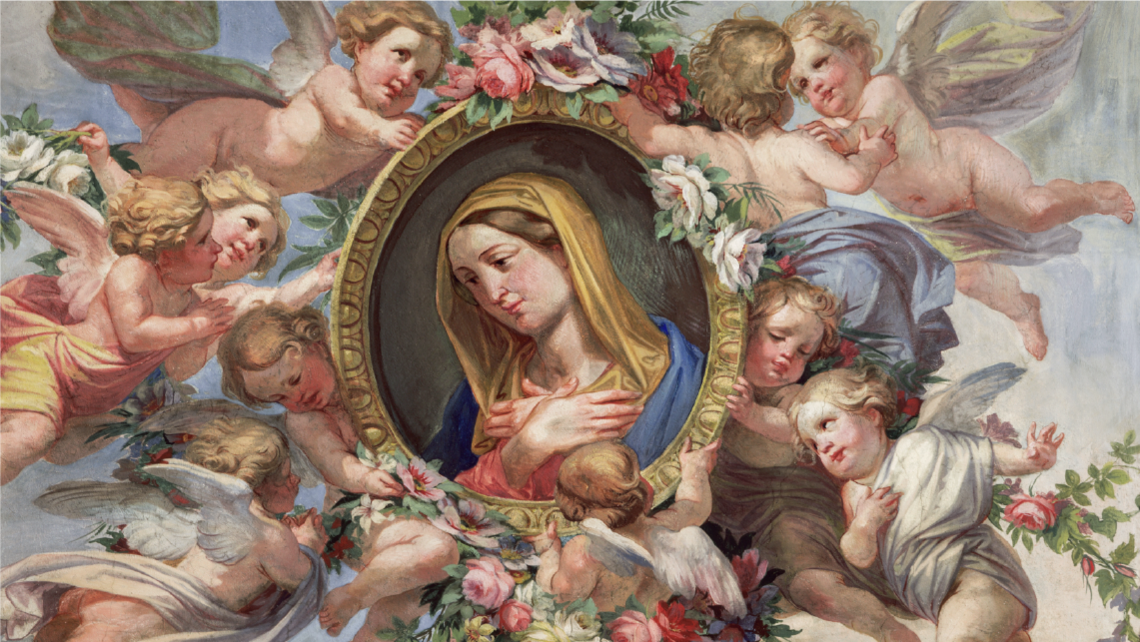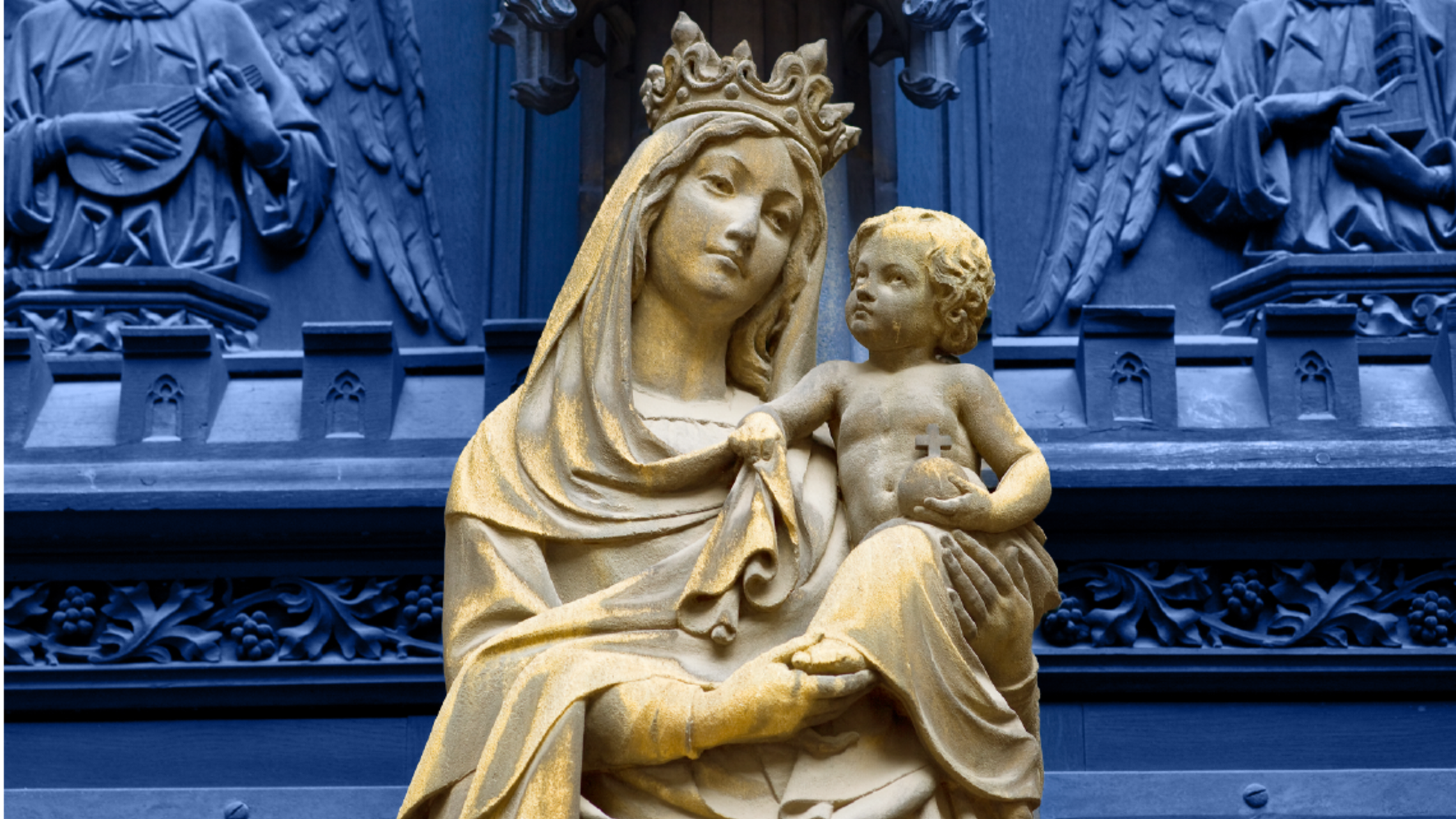
January 1st is the Solemnity of the Blessed Virgin Mary, Mother of God.
Holy Mary, Mother of God…
As you pray your Rosary, this line rolls so smoothly off the tongue — yet how many times have you stopped to wonder at, and marvel about, the fact that we call Mary the “Mother of God”?
Why do we call Mary “Mother of God?”
Mary not only gave birth to Jesus, but she also gave Jesus her humanity — her eye and hair color, and her other genetics. She cared for and helped to raise Him. Because Jesus is God, the Second Person of the Holy Trinity, who united Himself to our human nature to become true God and true man — and we know that Mary is the Mother of Jesus — we are therefore able to call Mary truly Mother of God.
Mary herself is not eternal; she was born to human parents (Anna and Joaquim). But she did give birth to Jesus, true God and true man. We do not call Mary “Mother of the Trinity.” We call her “Mother of God” because of who Jesus is.
In Luke 1:46-47, Mary says, “My proclaims the greatness of the Lord, my spirit rejoices in God my savior.” Mary tells us that she needed Jesus to save her, just like each and every one of us.
In Luke 1:42, Elizabeth’s exclamation reveals to us that Mary is to be honored: “Most blessed are you among women, and blessed is the fruit of your womb.” Throughout the ages, Mary will continue to be honored for what she did and who she was. She gave her voluntary consent, choosing to freely cooperate in God's saving plan for mankind through her faithfulness and obedience. Notice, we do not worship Mary; it is God alone to whom we give glory and praise. But we do give honor where it is due — Mary was perfectly obedient to God’s will, and therefore we honor Mary as we honor the saints and all other holy men and women who have done God’s will throughout the ages.
In 431, the Council of Ephesus — the third Ecumenic Council — convened to address the Nestorian heresy and sought to affirm Jesus’ divinity by affirming Mary as Theotokos (literally “God-bearer,” or “She who bore God”). You see, Nestorius wanted to call Mary simply Christotokos (“Christ-bearer”), because he felt that calling her Theotokos was too strong a designation. Through the efforts of St. Cyril of Alexandria, who is now honored as a Doctor of the Church, the Council definitively declared Mary to be Theotokos.
Today, we call Mary the “Mother of God” to affirm that the One she bore in her womb is “God from God, Light from Light, true God from true God.” Her designation is an affirmation of Jesus being both fully human and fully divine.
When was the Feast established?
By the 7th century, the Church in Rome had begun celebrating January 1st as the feast of Mary’s maternity.
This feast was replaced by the Feast of the Circumcision at some point in the 13th Century. It wasn’t until the revisions of Pope St. Paul VI, after the Second Vatican Council, that the Solemnity of Mary Mother of God was restored to its original date of January 1st.
It is actually quite fitting that this feast of Mary be celebrated with the beginning of each new year, because in the Christmas season we celebrate the beginning of salvation, and on the Solemnity of Mary, Mother of God, we pray that our salvation may be fulfilled.
References
https://www.ewtn.com/catholicism/library/solemnity-of-mary-mother-of-god...
https://holyfamily.org/the-solemnity-of-mary-mother-of-god-january-1/



